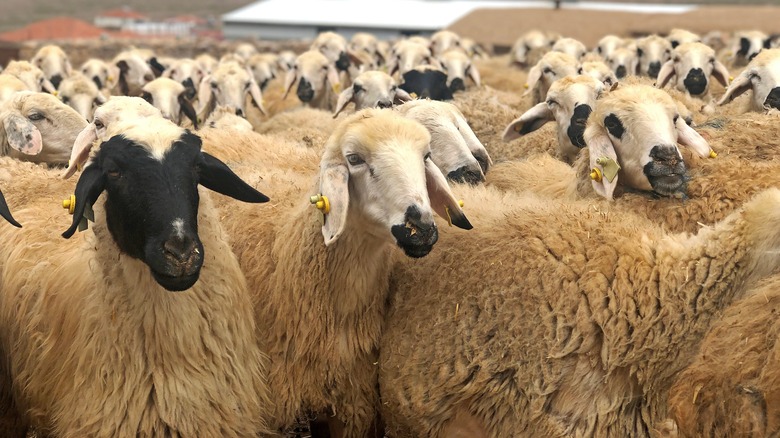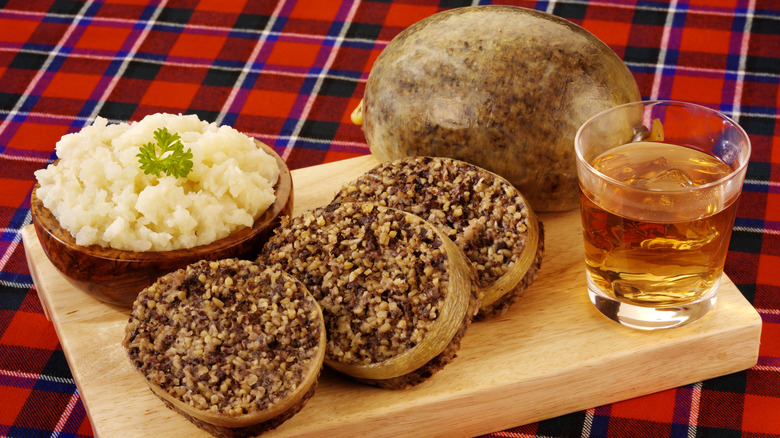How Haggis Became Associated With Scotland
Similar to how we equate pasta with Italy, tacos with Mexico, and fish and chips with England, when the average person envisions a food that's quintessentially Scottish, haggis is generally the first dish that comes to mind. While not something you'll typically find on American restaurant menus, it's often served at Scottish Highland Games events held in the U.S. alongside other hearty fares such as meat pies and Scotch eggs.
Traditional haggis is most commonly made of a sheep's minced organs or offal, including the heart, kidneys, and liver, and then mixed with oatmeal, onion, suet, and seasonings. The mixture is boiled in the sheep's stomach or some other intestinal casing. Its precise historical origins are unknown, but it is believed that Vikings may have introduced haggis to Scotland. The first known written record of a haggis recipe actually appeared in England, jotted down for posterity by one of King Richard II's cooks.
Haggis can be made from other animals as well as sheep, and enterprising chefs add their own unique spins. One innovative Scottish chef named Paul Wedgwood crafted a localized version of haggis from guinea pig on a visit to Peru (per BBC Travel). While Scotland is now universally regarded as the land of haggis, that wasn't always the case. It took a series of historical events for haggis to become associated with the country.
Haggis becomes part of Scottish identity
Haggis had once been a staple in England and Scotland. The shift to haggis as an integral part of Scotland's national food history began in the late 17th century, while England was experiencing an Agricultural Revolution and the country's diet transitioned along with it. As fresh produce became more widely available, dishes made from offal, such as haggis, fell out of favor in England, except among the lower class (via History Today).
Meanwhile, around this same time leading into the 1700s, an avalanche of misfortune had befallen Scotland. Economic decline, famine, and a miserably botched attempt at establishing a Scottish colony in Darien, Panama, ultimately contributed to a financial crash and widespread poverty. Due to these circumstances, haggis remained a chief part of the Scottish diet and grew in popularity into the mid-18th century because it was easily accessible and affordable — even for the abject poor.
Scottish poet Robert Burns, perhaps more than any other individual, helped popularize the food and establish its connection to Scotland as a symbol of pride and strength in his 1786 poem "Address to a Haggis" (per The Scotsman). Annual Burns Night celebrations are now held worldwide on his birthday (January 25), during which people channel their inner Scot, eating haggis and sipping Scotch whisky.

